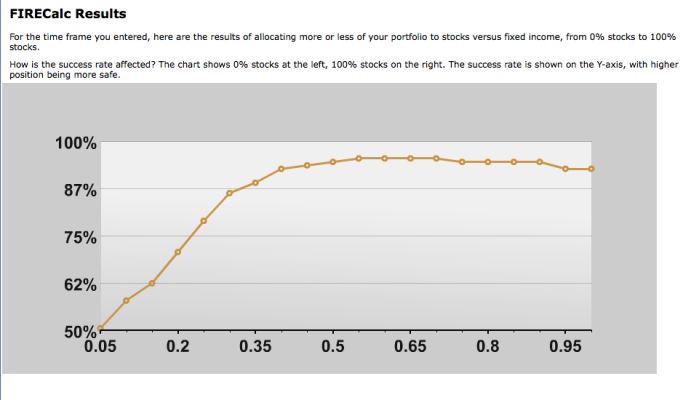Any "published fact" that specifies a specific withdrawl rule, at a certain age is foolish, IMHO.
The simple question is how many people retire (as suggested in the article) with all income sources available from the first day of retirement?
Many dual income couples do not stop work at the same time. Also, they do not draw SS at the same time. Throw in possible old pensions that kick in sometime in their mid 60's and possible current/future SPIA income and you find that it is not a straight line withdrawl ratio in the early years of retirement.
Taking my own (and DW's case), we both planned to retire when we turned age 59. I did - my DW didn't (her choice). Our forecast withdrawl rate at that time was at 6%, and this was based upon our portfolio value in early 2007.
That 6% was forecast to increase over the next 11 years (when I would claim my SS) to a bit over 11%. BTW, my wife plans on taking SS early next year, at age 62 (if she actually does retire).
We're in trouble, right? No, not actually. At age 71 (first full year of SS) our joint portfolio withdrawl rate drops to
below 4%, and stays there till age 85, only slightly rising in following years (assuming we're still alive).
Retirement is not a static target. Both how you live it, and your projected income (e.g. withdrawl rate) do change, regardless of well placed plans.
BTW, that 6% withdrawl forecast from over 2.5 years ago today is actually 2.5% due to two non-planned for changes. The continued employment of my wife (even at reduced hours) and the purchase of an SPIA with funds from 2007 - before the downturn.
Plans are great, but they are just that - plans

...

 ...
...
